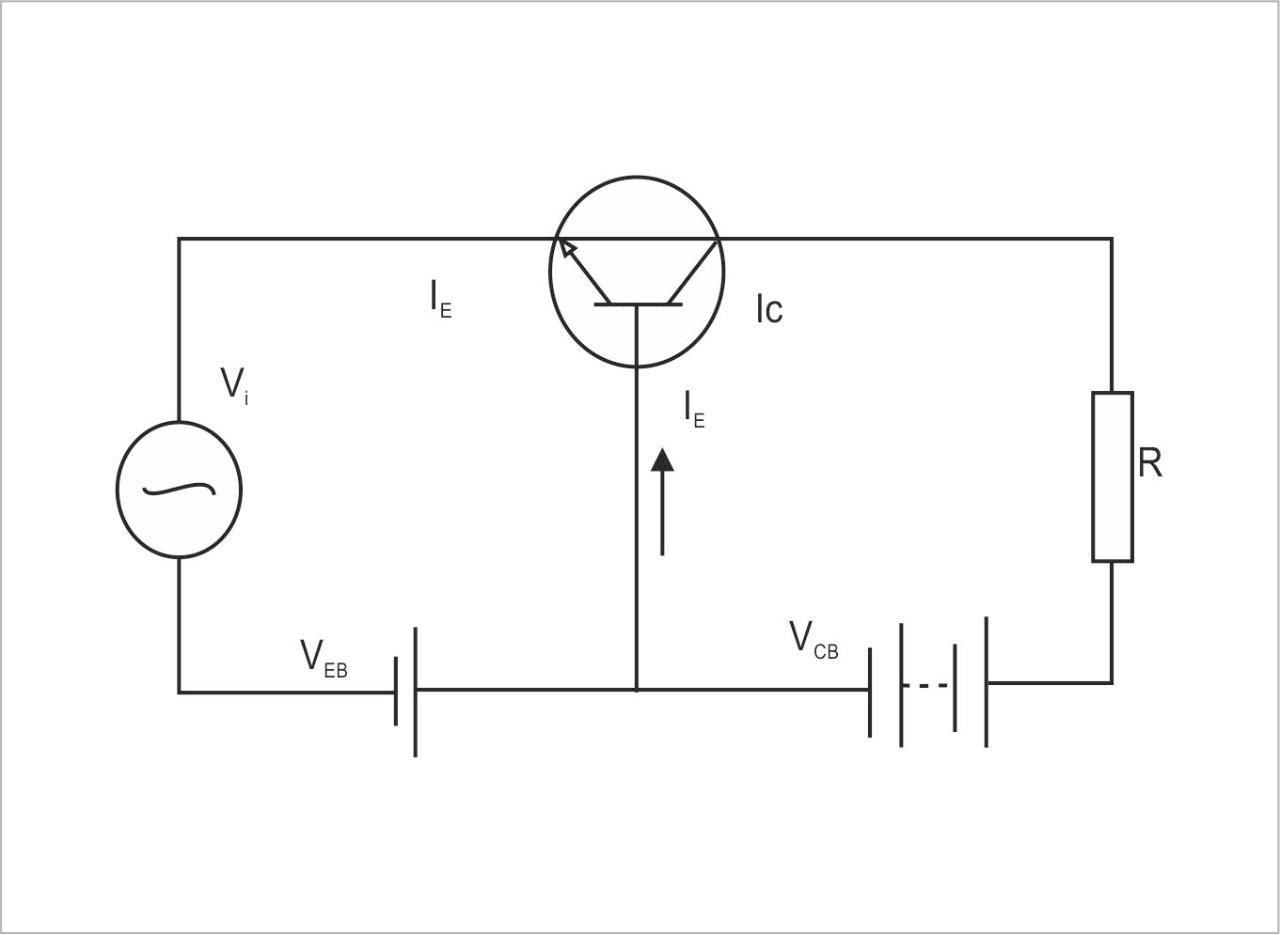
In the use of transistor as an amplifier:
(A) The emitter-base junction is reverse biased, and the collector base junction is also reverse biased.
(B) The emitter-base junction is forward biased, and the collector base junction is reverse biased.
(C) Both the junctions are forward biased.
(D) Any of the two junctions may be forward biased.
Answer
217.5k+ views
Hint: In this question, the concept of the transistor is used, that is the transistor can work as an amplifier by increasing the strength of a weak signal. The transistors can act as an amplifier when they are correctly biased.
Complete step by step answer:
We know that the transistor can work as an amplifier by increasing the strength of a weak signal. The transistors can act as an amplifier when they are correctly biased.
To understand the transistor as an amplifier, let us consider Figure (1). In the given figure, a transistor is connected to the circuit as an amplifier.

Figure (1)
As we can see in Figure (1), the input of the circuit is connected to the forward biased and the output of the circuit is connected to the reverse biased.
As we know that, to the base-emitter junction input signal or current is applied and in the given circuit the output is taken through the load in the emitter collector junction and the DC voltage is applied to the emitter-base junction.
Due to low resistance in the input circuit, there will be any small change in input signal, so the small change will be in output. So, as the small input voltage gives the large output voltage, which means that the transistor is working as an amplifier.
Therefore, in the use of transistors as an amplifier, the emitter-base junction is forward biased, and the collector base junction is also reverse biased. So, the option (B) is correct.
Note: As we know that a semiconductor device which is used to amplify or switch electric signals and electrical power is called the transistor. A transistor is a composition of semiconductor devices that is having three terminals for connection to external circuits.
Complete step by step answer:
We know that the transistor can work as an amplifier by increasing the strength of a weak signal. The transistors can act as an amplifier when they are correctly biased.
To understand the transistor as an amplifier, let us consider Figure (1). In the given figure, a transistor is connected to the circuit as an amplifier.

Figure (1)
As we can see in Figure (1), the input of the circuit is connected to the forward biased and the output of the circuit is connected to the reverse biased.
As we know that, to the base-emitter junction input signal or current is applied and in the given circuit the output is taken through the load in the emitter collector junction and the DC voltage is applied to the emitter-base junction.
Due to low resistance in the input circuit, there will be any small change in input signal, so the small change will be in output. So, as the small input voltage gives the large output voltage, which means that the transistor is working as an amplifier.
Therefore, in the use of transistors as an amplifier, the emitter-base junction is forward biased, and the collector base junction is also reverse biased. So, the option (B) is correct.
Note: As we know that a semiconductor device which is used to amplify or switch electric signals and electrical power is called the transistor. A transistor is a composition of semiconductor devices that is having three terminals for connection to external circuits.
Recently Updated Pages
Addition of Three Vectors: Methods & Examples

Addition of Vectors: Simple Guide for Students

Algebra Made Easy: Step-by-Step Guide for Students

Relations and Functions: Complete Guide for Students

Analytical Method of Vector Addition Explained Simply

Arithmetic, Geometric & Harmonic Progressions Explained

Trending doubts
JEE Main 2026: Application Form Open, Exam Dates, Syllabus, Eligibility & Question Papers

Derivation of Equation of Trajectory Explained for Students

Hybridisation in Chemistry – Concept, Types & Applications

Understanding the Angle of Deviation in a Prism

Understanding Collisions: Types and Examples for Students

How to Convert a Galvanometer into an Ammeter or Voltmeter

Other Pages
JEE Advanced Marks vs Ranks 2025: Understanding Category-wise Qualifying Marks and Previous Year Cut-offs

Understanding Atomic Structure for Beginners

Ideal and Non-Ideal Solutions Explained for Class 12 Chemistry

Degree of Dissociation: Meaning, Formula, Calculation & Uses

Understanding Electromagnetic Waves and Their Importance

Understanding the Electric Field of a Uniformly Charged Ring




